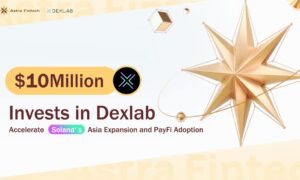In today’s rapidly evolving technological landscape, the integration of Context-Aware Retrieval, Contextual Retrieval Systems, and Knowledge-Based Systems has become more critical than ever. One emerging technique that exemplifies this integration is Retrieval Augmented Generation (RAG). Behind the rapid development of this technology are companies like K2view who are invested into streamlining processes to improve business practices.
This article will address the intricacies of RAG, its advantages, and its applications across various domains.
What is Retrieval-Augmented Generation?
Retrieval-Augmented Generation (RAG) is a cutting-edge technique that combines large language models (LLMs) with external data sources to enhance the accuracy and relevance of generated responses.
Unlike traditional language models that rely solely on pre-trained data, RAG introduces an additional step of retrieving relevant information from external sources before generating a response. This hybrid approach ensures that responses are not only contextually accurate but also backed by up-to-date information.
How RAG Works
The process of RAG involves several key steps:
- Query Processing: The system receives a query from the user.
- Information Retrieval: Relevant information is retrieved from external databases or knowledge bases.
- Response Generation: The retrieved information is used to generate a contextually accurate and informative response.
This methodology ensures that the generated responses are both precise and reliable, significantly reducing the chances of “hallucinations” where the model generates incorrect or misleading information.
The Importance and Advantages of RAG Technology
Enhanced Precision and Reliability
One of the primary benefits of RAG is its ability to improve the precision and reliability of responses. By incorporating external data sources, RAG ensures that the information provided is not only accurate but also relevant to the user’s query. This is particularly crucial in domains where accuracy is paramount, such as healthcare and finance.
Reduction of “Hallucinations”
Traditional language models are prone to generating responses that are not grounded in reality, commonly referred to as “hallucinations.” RAG mitigates this risk by cross-referencing responses with external data sources, thereby enhancing the overall trustworthiness of the system.
Cost-Effectiveness and Ease of Implementation
Implementing Contextual Retrieval Systems can be both time-consuming and costly. However, RAG offers a cost-effective alternative by eliminating the need to re-train models on new data sets. Instead, it leverages existing data sources, making it easier and more economical to implement.
Access to Current Information
In a world where information is constantly evolving, having access to up-to-date data is crucial. RAG allows models to link to real-time data sources, ensuring that the information provided is current and relevant.
Applications and Use Cases of RAG
The versatility of RAG makes it applicable across a wide range of domains. Here are some notable applications:
Healthcare
In the healthcare sector, RAG can be used to provide medical professionals with accurate and up-to-date information, thereby enhancing patient care. For instance:
- Clinical Decision Support: Assisting doctors with accurate, data-backed treatment recommendations.
- Patient Interaction: Providing patients with reliable information about their conditions and treatment options.
Finance
In the financial industry, the need for accurate and timely information is paramount. RAG can be utilized for:
- Market Analysis: Offering real-time insights into market trends and financial forecasts.
- Customer Support: Enhancing the accuracy and relevance of responses provided by financial advisors and customer service representatives.
Customer Support
RAG can significantly improve the efficiency and effectiveness of customer support systems by providing accurate and contextually relevant responses to customer queries. This is particularly useful for:
- Chatbots: Enhancing the capabilities of chatbots to provide more accurate and helpful responses.
- Employee Training: Assisting in the training of customer support agents by providing them with reliable information.
Developer Productivity
In the realm of software development, RAG can be a valuable tool for developers by:
- Code Assistance: Providing accurate coding suggestions and solutions based on real-time data.
- Bug Fixing: Offering relevant information to help developers quickly identify and fix bugs.
Embracing the Future with RAG Technology
As businesses navigate the complexities of an ever-changing digital landscape, the adoption of advanced technologies like Retrieval Augmented Generation (RAG) becomes increasingly essential. By enhancing the accuracy, reliability, and relevance of information, RAG not only addresses current challenges but also opens new avenues for innovation and efficiency. Whether in healthcare, finance, customer support, or software development, the integration of RAG technology can drive significant improvements in decision-making, service quality, and operational efficiency.
For businesses looking to stay ahead of the curve, exploring the potential of RAG and its applications is not just an option, but a strategic imperative. By leveraging this cutting-edge technology, organizations can unlock new opportunities for growth and transformation, ensuring they remain competitive in an increasingly data-driven world.
Discover how RAG technology can revolutionize your business and take the first step towards a smarter, more efficient future.

































